West & Central Asia
AP Art History West & Central Asia Resources
Overview
- Video Map of Images (credit: Cheryl Hughes)
- Blair and Bloom, “Ornament and Islamic Art”, Cosmophilia: Islamic Art from the David Collection, Copenhagen, pp.9-30, (Esp. pp. 17-30)
- Neave, Dorinda, Lara C. W. Blanchard, and Marika Sardar. Asian Art. Upper Saddle River, N.J.: Pearson, 2014.
Background on West Asia and the later Islamic World
Kim Masteller
History and Background of the Abbasid Empire
Kim Masteller
Background on the Timurid Empire
Kim Masteller
Overview
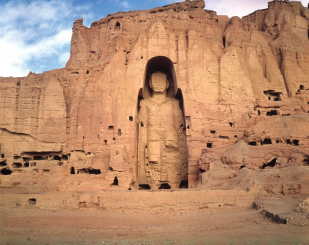
[Bamiyan, Afghanistan. Gandharan. c. 400-800 (destroyed in 2001). Cut rock with plaster & polychrome paint.]

[Lhasa, Tibet. Yarlung Dynasty. Believed to have been brought to Tibet in 641. Gilt metals with semiprecious stone, pearls and paint; various offerings.]
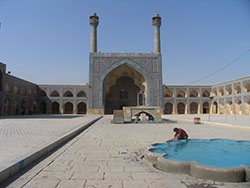
[Isfahan, Iran. Islamic, Persian: Seljuk, Il-Khanid, Timurid and Safavid Dynasties. c. 700 C.E.; additions and restorations in the 14th, 18th, and 20th centuries C.E. Stone, brick, wood, plaster, and glazed ceramic tile. (4 images)]
Recommended reading(s)
Grabar, Oleg. The Great Mosque of Isfahan. Chapter 3 “The Chronology of the Mosque” pp. 43-60

[Muhammad ibn al-Zain. c. 1320–1340 C.E. Brass inlaid with gold and silver.]
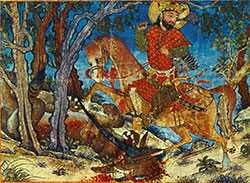
[Islamic; Persian, Il’Khanid. c. 1330–1340 C.E. Ink and opaque watercolor, gold, and silver on paper.]
Recommended reading(s)
Robert Hillenbrand,”The Arts of the Book in Ilkhanid Iran,” The Legacy of Genghis Khan: Courtly Art and Culture in Western Asia, 1256-1353. New York: The Metropolitan Museum of Art, 2002. Pp. 134-167
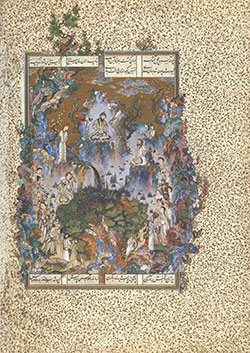
[Sultan Muhammad. c. 1522–1525 C.E. Ink, opaque watercolor, and gold on paper]
Recommended reading(s)
Canby, Sheila, from Chpt. 4, “Safavid Painting,” Hunt for Paradise: Court Arts of Iran, 1501-1576. Milan: Skira publishers and New York: Asia Society, 2003. pp. 80-102
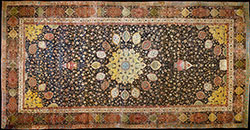
[Maqsud of Kashan. 1539–1540 C.E. Silk and wool.]

